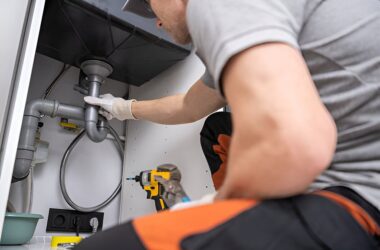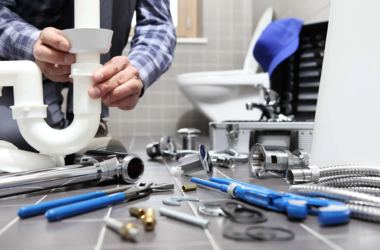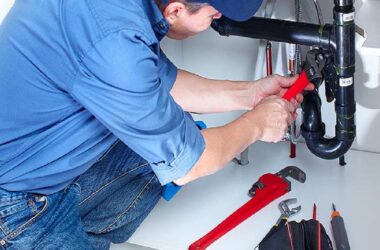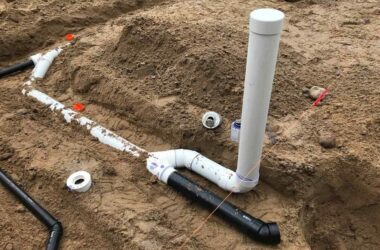Progressing cavity pumps—commonly known as PC pumps—are quiet workhorses in industries where precision, consistency, and the ability to handle challenging fluids are crucial. From oil and gas to wastewater treatment, these pumps are indispensable when traditional pumping technologies fall short.
Whether you’re an engineer planning a fluid handling system or a buyer comparing pump technologies, this comprehensive guide will help you understand how progressing cavity pumps work, their key advantages, and what to look for when choosing one for your application.
What Is a Progressing Cavity Pump?
A progressing cavity pump is a type of positive displacement pump that moves fluid through a series of small, fixed-shaped cavities. These cavities are formed between a helical rotor and a stator. As the rotor turns inside the stator, the fluid is trapped in these cavities and progresses through the pump in a smooth, non-pulsating flow.
Unlike centrifugal pumps, which rely on high-speed rotation to move fluid, PC pumps use mechanical displacement, making them ideal for handling viscous, abrasive, or shear-sensitive materials.
How Do Progressing Cavity Pumps Work?
At the heart of a progressing cavity pump is its unique design:
- Rotor: A helical metal shaft, typically made of stainless steel or another durable material.
- Stator: An elastomer-lined housing with a matching double helix internal profile.
As the rotor turns inside the stator, cavities form between the rotor and stator surfaces. These cavities move from the suction end to the discharge end of the pump, carrying fluid along with them.
The result? A nearly pulsation-free flow with a consistent volume per revolution, regardless of system pressure.
Where Are PC Pumps Used?
Progressing cavity pumps serve a wide range of industries and processes, particularly where other pump types struggle. Key applications include:
- Oil and Gas: For transferring crude oil, drilling muds, and other viscous fluids.
- Wastewater Treatment: To handle sludge, slurries, and chemical dosing with high precision.
- Food and Beverage: For gentle handling of delicate products like yogurt, honey, or fruit concentrates.
- Chemical Processing: Where controlled dosing of aggressive or sensitive chemicals is critical.
- Mining and Minerals: For abrasive slurry transport, tailings, and thickened material pumping.
Their ability to handle both high-viscosity and low-viscosity fluids—often containing solids—makes them a versatile choice across sectors.
Advantages of Progressing Cavity Pumps
1.Smooth, Consistent Flow
Because of their cavity-based pumping mechanism, PC pumps deliver a continuous, non-pulsating flow. This makes them suitable for metering and precision applications where flow consistency is critical.
2. Handles Viscous and Abrasive Fluids
Progressing cavity pumps can handle thick fluids with ease, including sludges, slurries, and pastes. Their low-shear action also makes them suitable for shear-sensitive substances.
3. Self-Priming Capabilities
PC pumps are self-priming and capable of dry suction lifts, which is beneficial when pumping from tanks or wells below the pump level.
4. Reversible Operation
They can run in either direction without performance degradation, allowing for flexibility in design and system operation.
5. High Pressure Capabilities
Multi-stage PC pump designs can generate significant discharge pressures, making them suitable for applications that require fluid to be transferred over long distances or to elevated heights.
Key Considerations When Choosing a PC Pump
Selecting the right progressing cavity pump involves evaluating both fluid characteristics and system requirements. Here are some crucial factors to consider:
1.Fluid Viscosity and Solids Content
The nature of the fluid—its thickness, flow behavior, and whether it contains solids—will influence rotor-stator selection, speed, and wear resistance.
2. Flow Rate and Pressure Requirements
Understand the flow volume needed and the system pressure. PC pumps operate best at low speeds for high-viscosity fluids, and their pressure output can be increased by adding stages (rotor/stator cavities).
3. Temperature and Chemical Compatibility
Ensure that the stator elastomer and rotor material are compatible with the fluid’s temperature and chemical composition to avoid premature wear or failure.
4. Pump Orientation and Mounting
Consider vertical versus horizontal mounting, available floor space, and proximity to the suction source. Progressing cavity pumps are flexible in layout but require careful alignment.
5. Maintenance Accessibility
Although PC pumps are relatively simple in design, routine maintenance (especially stator and rotor replacement) should be factored into the pump’s life cycle cost. Choose a design that allows easy dismantling.
Common Misconceptions About Progressing Cavity Pumps
Myth 1: All PC Pumps Are the Same
While the basic operating principle is consistent, variations in rotor geometry, stator materials, and seal types significantly affect performance and durability. Always match the pump design to your application.
Myth 2: PC Pumps Are Only for Viscous Fluids
Though they excel with thick fluids, PC pumps can also handle thin, low-viscosity liquids, provided the speed is adjusted to avoid excessive wear.
Myth 3: Maintenance Is Difficult
Modern PC pumps often feature modular, user-friendly designs that allow for quicker maintenance, reduced downtime, and lower overall ownership cost.
Maintenance Tips to Extend PC Pump Life
- Regular Inspection: Check rotor and stator wear regularly. Look for signs of cracking, swelling, or scoring.
- Lubrication: Ensure bearings and seals are properly lubricated according to the manufacturer’s guidelines.
- Speed Control: Use variable frequency drives (VFDs) to avoid overspeeding, which can cause premature wear.
- Avoid Dry Running: PC pumps should never run dry unless specifically designed to do so, as it can rapidly damage the stator.
When Should You Not Use a PC Pump?
While progressing cavity pumps are versatile, there are situations where alternative technologies may be better:
- High-Speed Applications: If the application requires high-speed operation and thin fluids, a centrifugal pump may be more efficient.
- Very Low Viscosity Fluids at High Temperatures: These can cause excessive slip and reduce volumetric efficiency in PC pumps.
- Tight Space Constraints: Due to their length, especially in multi-stage designs, PC pumps may not be suitable where space is limited.
Progressing cavity pumps offer a unique solution for industries that demand precision, reliability, and the ability to handle complex fluids. Their consistent flow, self-priming ability, and versatility across a range of applications make them a favored choice for engineers and buyers alike.
Understanding the operational principles and matching the right PC pump to your application can lead to improved efficiency, reduced maintenance costs, and long-term system reliability. Whether you’re designing a new fluid system or upgrading existing equipment, progressing cavity pumps deserve serious consideration.






